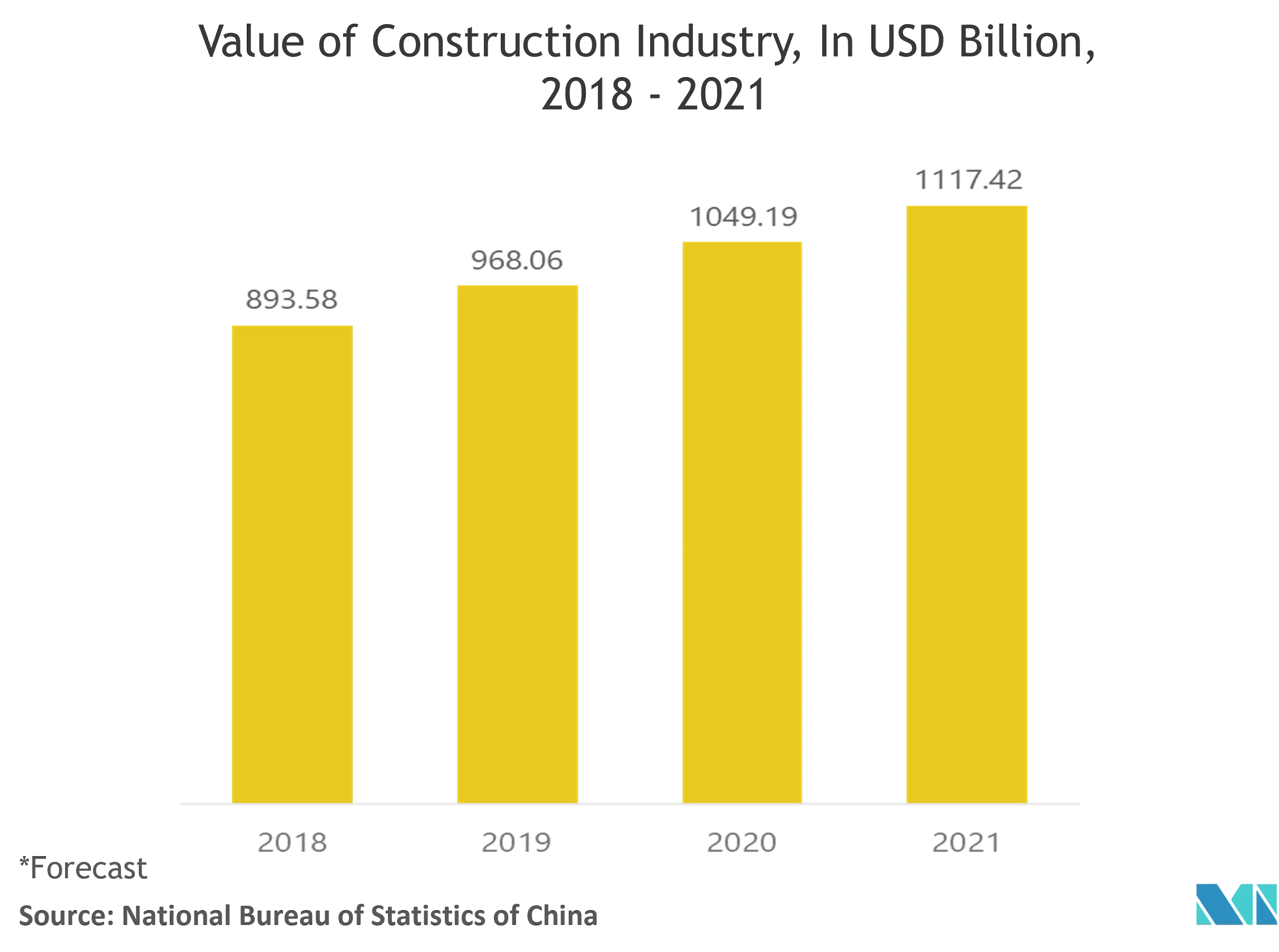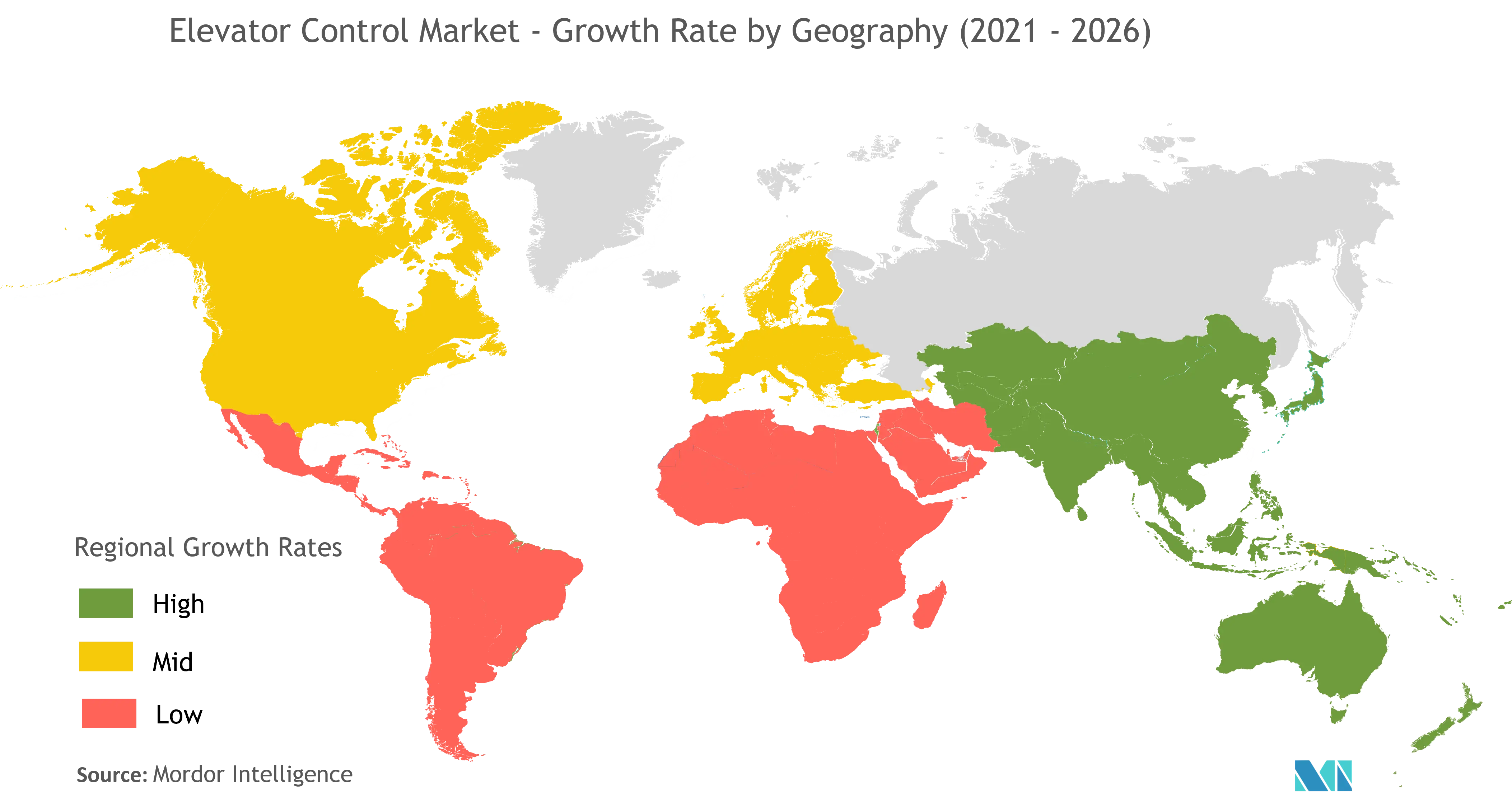Market Trends of Elevator Control Industry
This section covers the major market trends shaping the Elevator Control Market according to our research experts:
Increased Investment in Building Infrastructure to Drive the Elevator Control Market
- With the growth of high-rise buildings, the elevator control systems have also achieved rapid development, and the design has been constantly improving and optimizing. The implementation of advanced technologies in control systems has been driving the growth of the market.
- The adoption of advanced technologies, such as artificial intelligence, smart sensors and IoT, among others, assist in reducing energy consumption, improving the safety of the elevators, and control traffic or congestion efficiently and conveniently.
- The increased investment in allied infrastructure have been rapidly increasing for achieving sustainability and majorly concerned with the growing urbanization trend. In October 2020, the International Monetary Fund (IMF) announced member governments to seize a low-interest rate opportunity to invest in infrastructure to drive recovery from the coronavirus pandemic and a shift toward greener energy. The increase in public investment by 1% of GDP in advanced and developing economies would grow by 2.7%.
- The suggestion is to help the countries tackle the pandemic crisis. The increase in the infrastructure also promotes the growth of the market for elevator control as they make an essential part of residential and commercial elevator fleet, helping in mobility.
- The major investments in building infrastructure can be witnessed from emerging economies, such as India, China, Saudi Arabia, and other BRICS, which creates new opportunities for the elevator control market. As part of Vision 2030, Saudi Arabia plans on making a USD 425 billion investment in infrastructural projects. The investments will be carried out till 2030, and the nation aims to cut its dependence on oil.
- On similar lines, India also has a USD 1.5 trillion National Infrastructure Pipeline for six years ending 2025. The plan seeks to make investments across a wide range of hard infrastructure and social sectors.
- In March 2021, the Chinese government approved China’s 14th Five-Year Plan (FYP) (2021-2025), the grand strategic blueprint for the next half-decade, and longer-term goals for 2035. The government plans to have China’s urbanization rate reach 65% of the population by 2025 and 75% that of an advanced economy by 2035. As more people move from rural to urban areas, the focus is on more significant investment in building infrastructure.

Asia-Pacific will Experience Significant Growth in Forecast Period
- The Asia-Pacific region is witnessing the growing presence of multinational companies due to the opportunities offered by the emerging markets, in terms of infrastructure and reduced labor costs. These companies are looking for ways to streamline operations in a more established market and increasing their headcount in Asian countries.
- With the emergence of new economies and an increasing focus on industrialization throughout the Asia-Pacific region, citizens flocked to the cities and urban areas in hopes of better employment and salary opportunities.
- Urbanization has further catalyzed the emergence of megacities throughout the Asia-Pacific region. Urbanization is expected to grow throughout the coming years, thereby increasing the demand for modern infrastructure in both commercial and residential spaces.
- According to a survey by the World Bank, countries like Macau, Singapore, and Hong Kong exhibited 100% of the population as urban populations in 2019. These countries were followed by Japan, New Zealand, and Australia, to name a few.
- The rapid urbanization of the Asia-Pacific region has shaped the skyscrapers’ market due to increased demand for infrastructure and population density. It has fueled the need for towering skyscrapers, both for residential and commercial purposes.
- Countries like Japan are increasing their number of office building construction starts to support the growth of urban populations and private offices in the country. For instance, according to MLIT (Japan), in 2020, the number of office building construction starts in Japan was about 10.31 thousand.
- According to the Ministry of Land, Infrastructure, and Transport (South Korea), in 2020, there were approximately 1.32 million units of commercial buildings in South Korea, compared to 1.29 million in 2019. The number of commercial buildings in South Korea has increased steadily in the last decade, primarily driven by the increasing demand for modern and advanced commercial spaces in the country.

